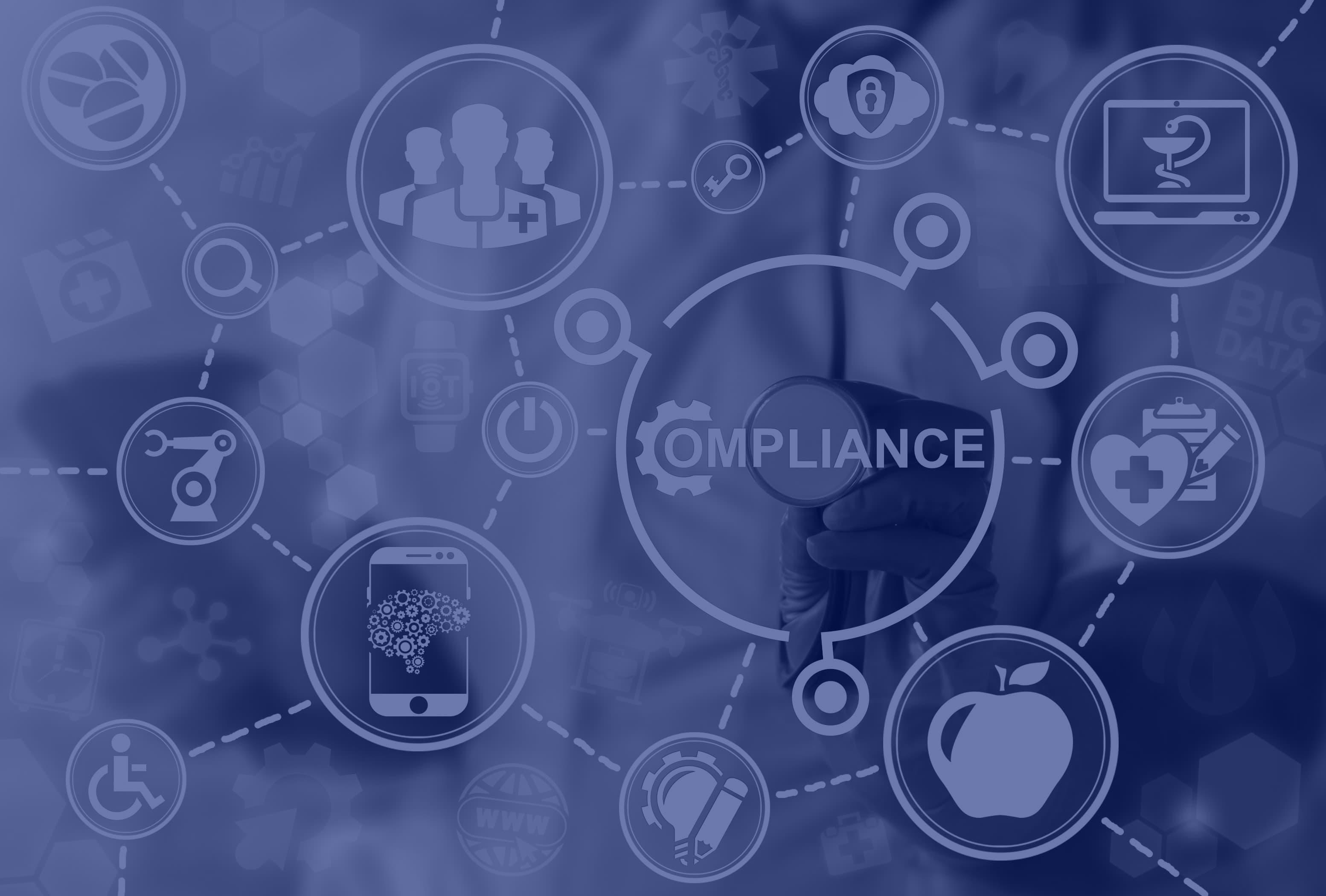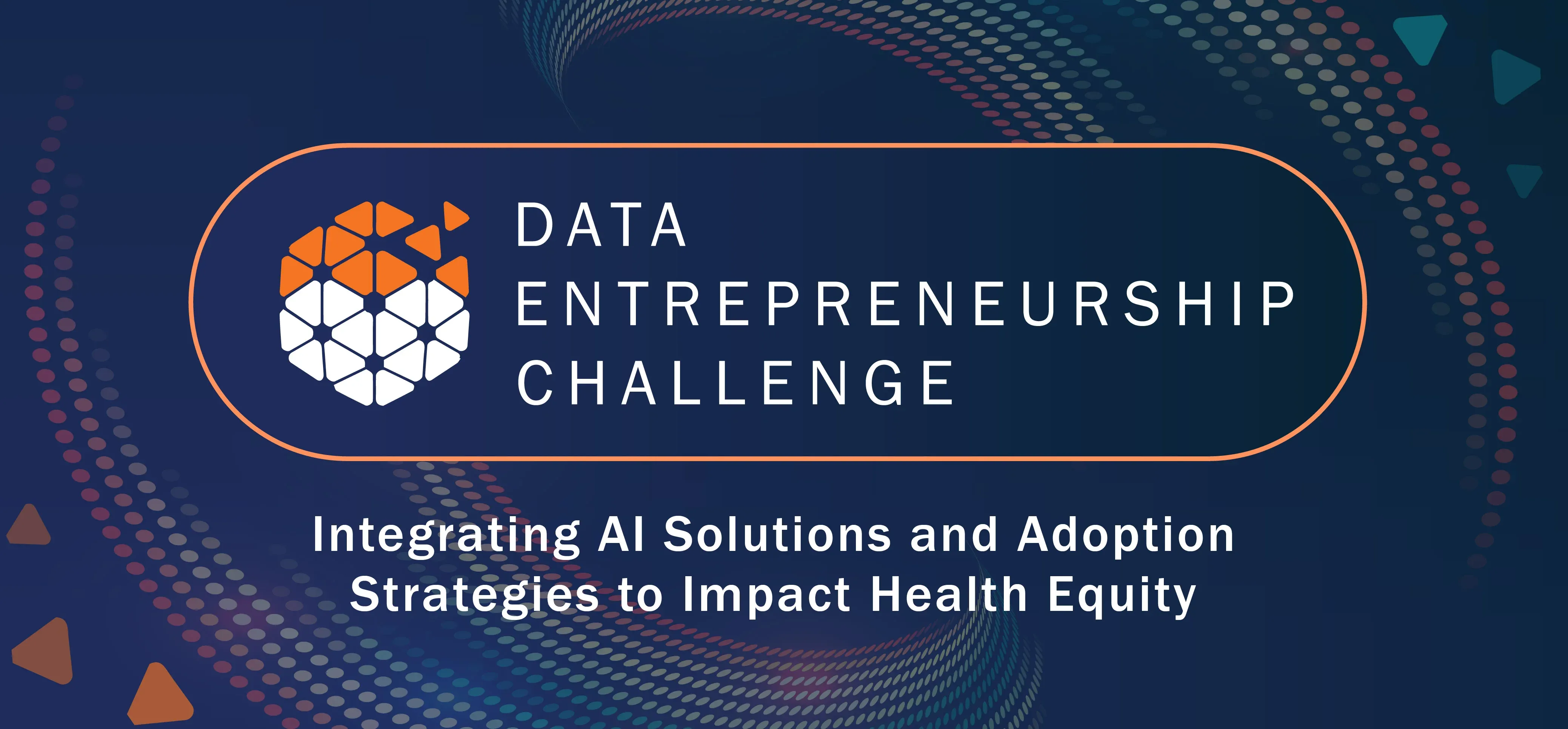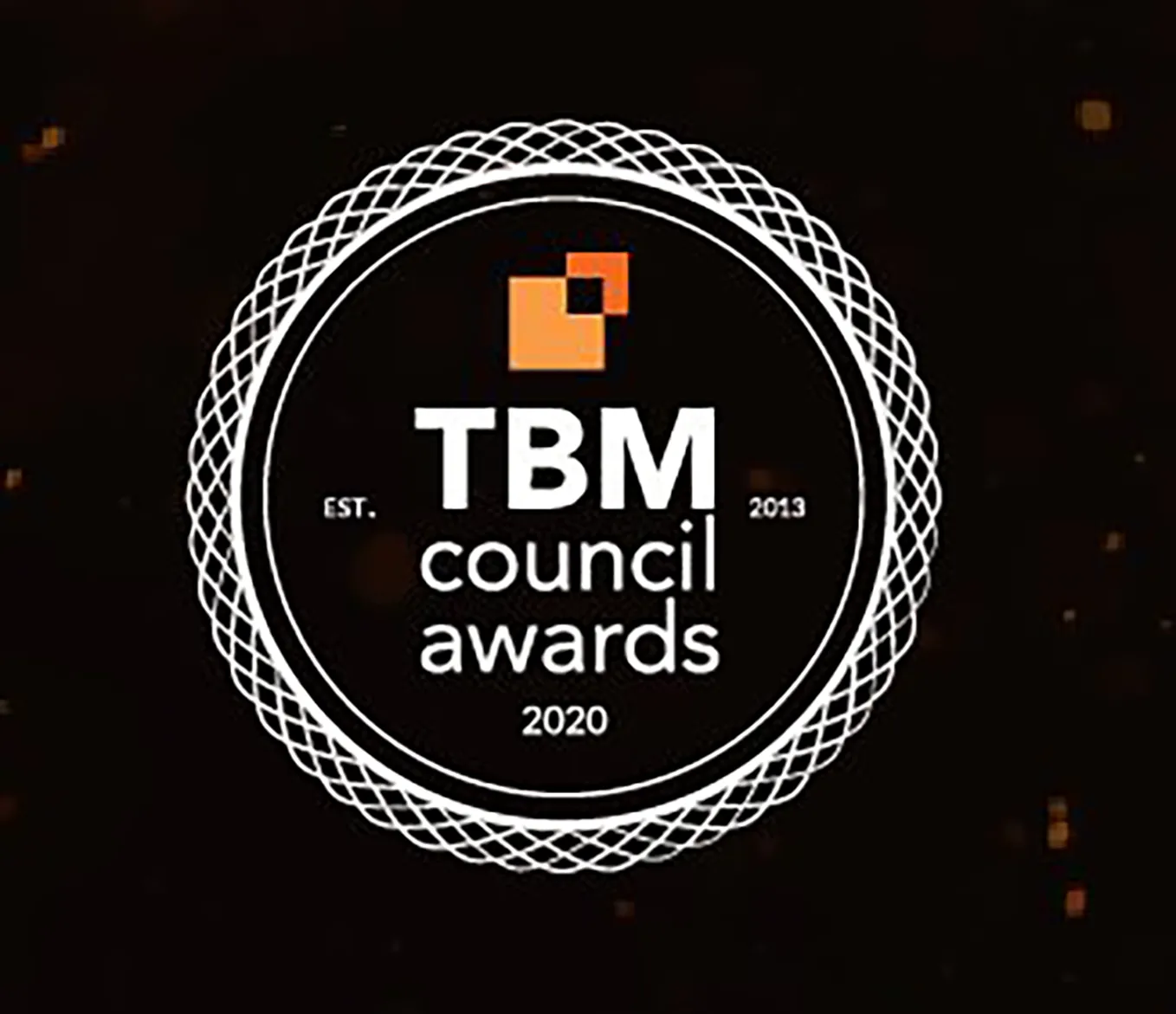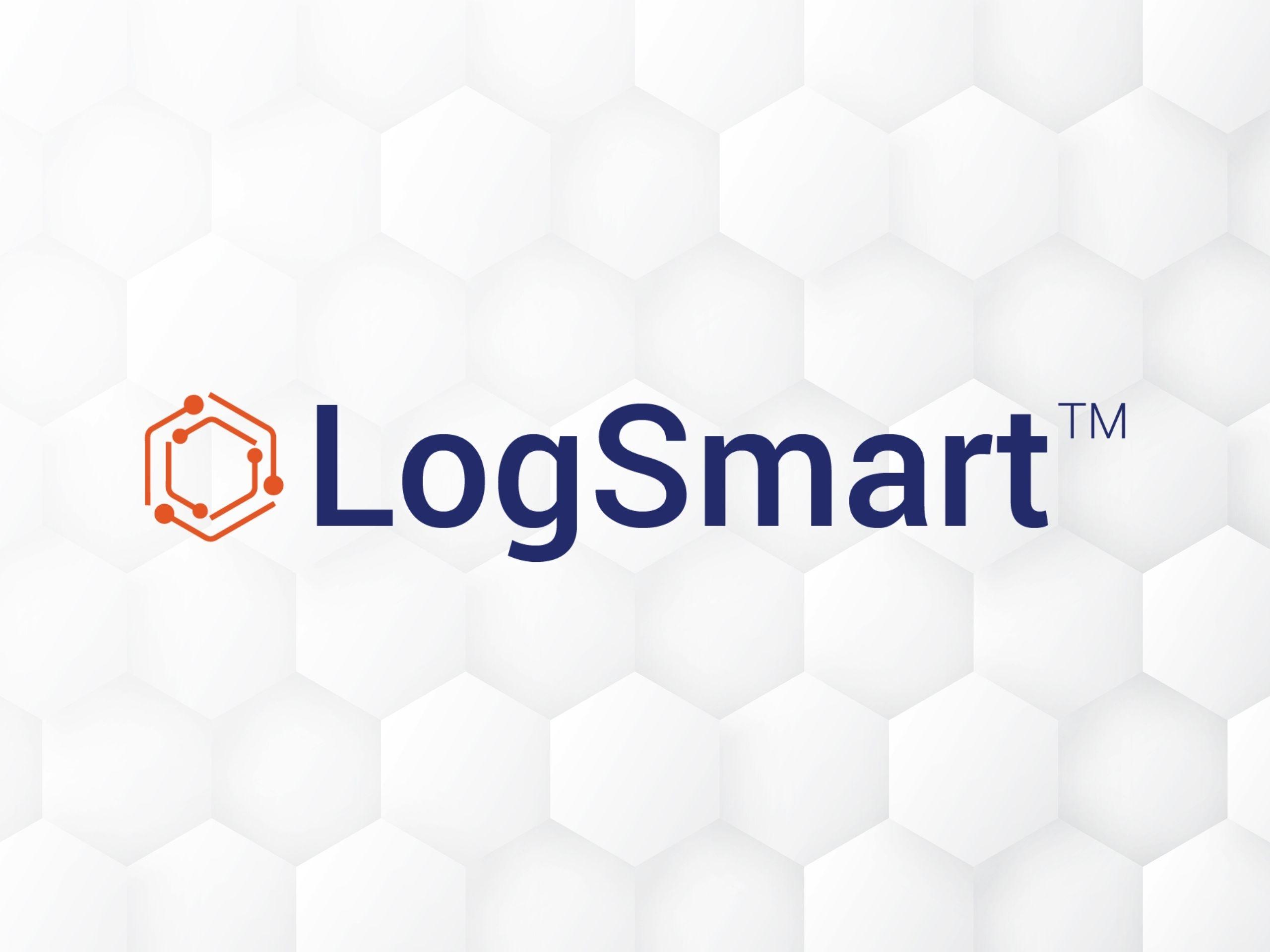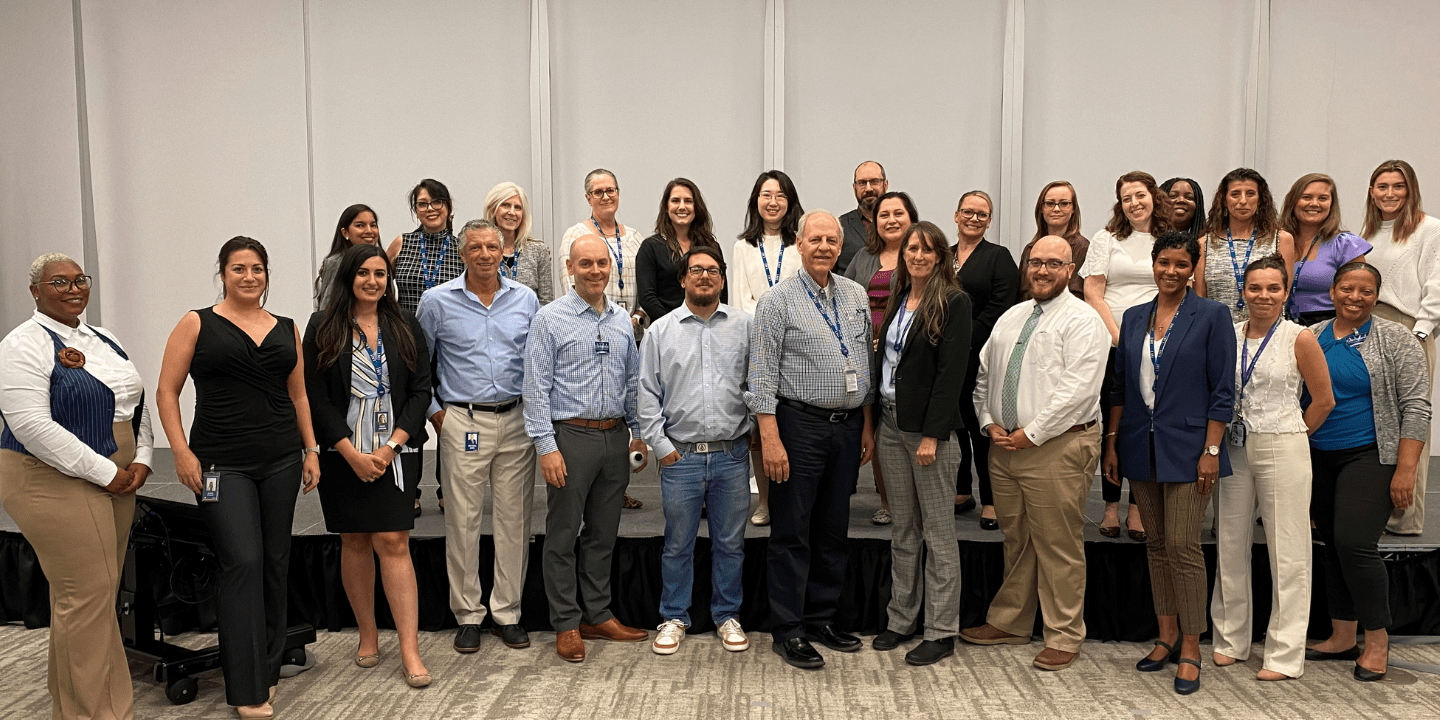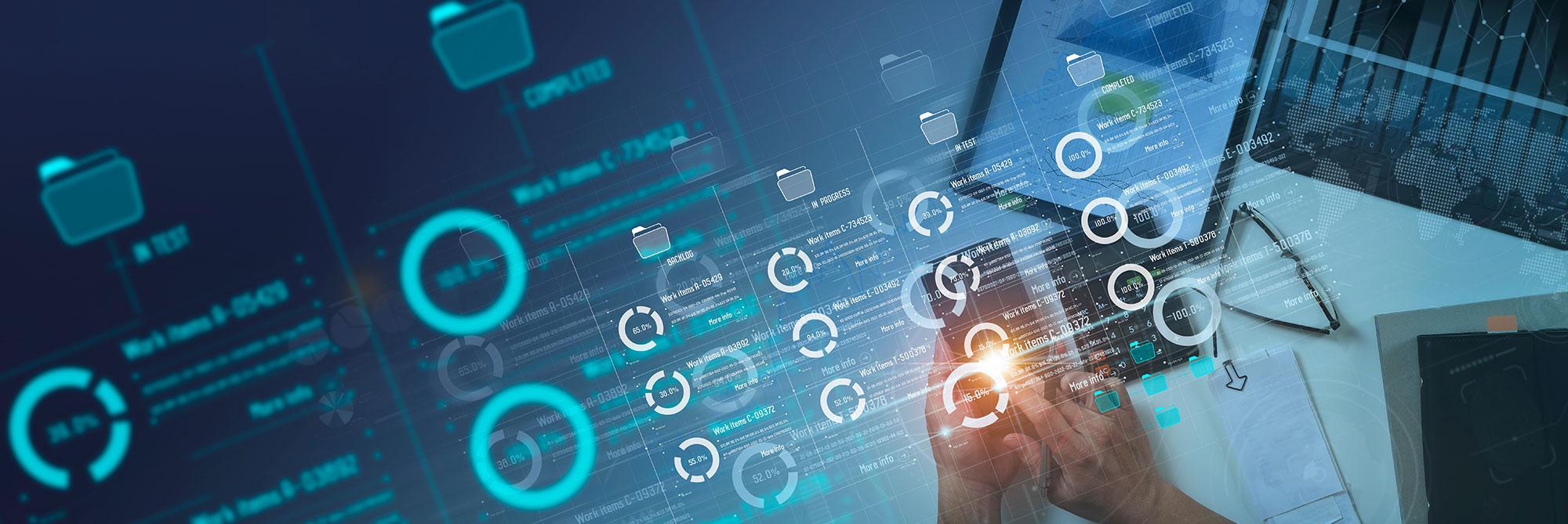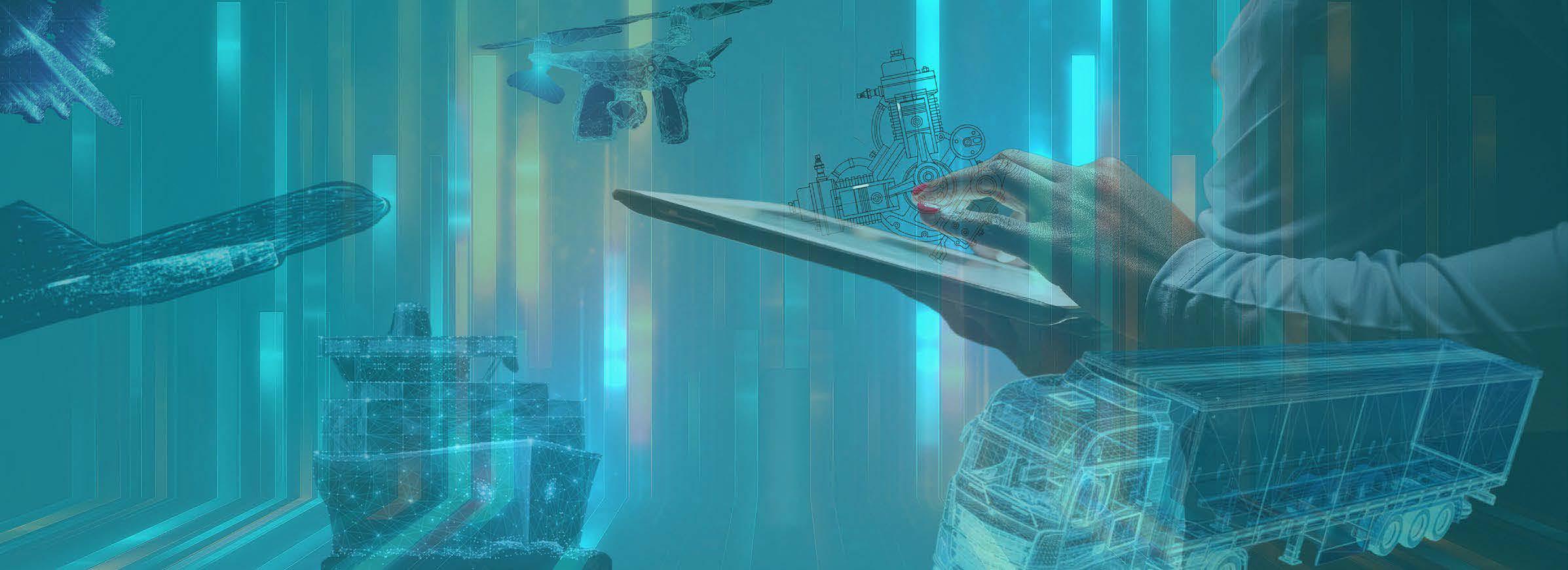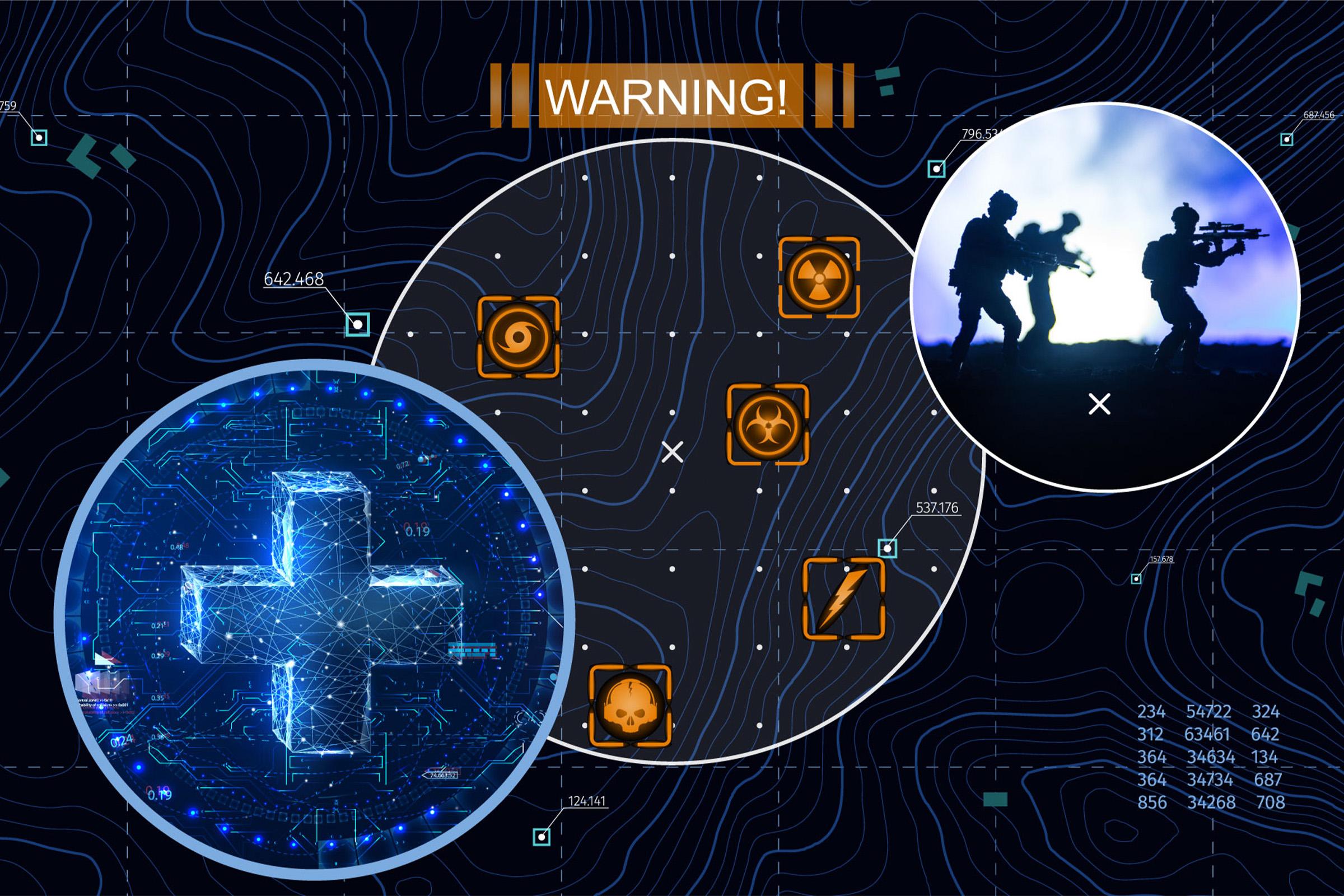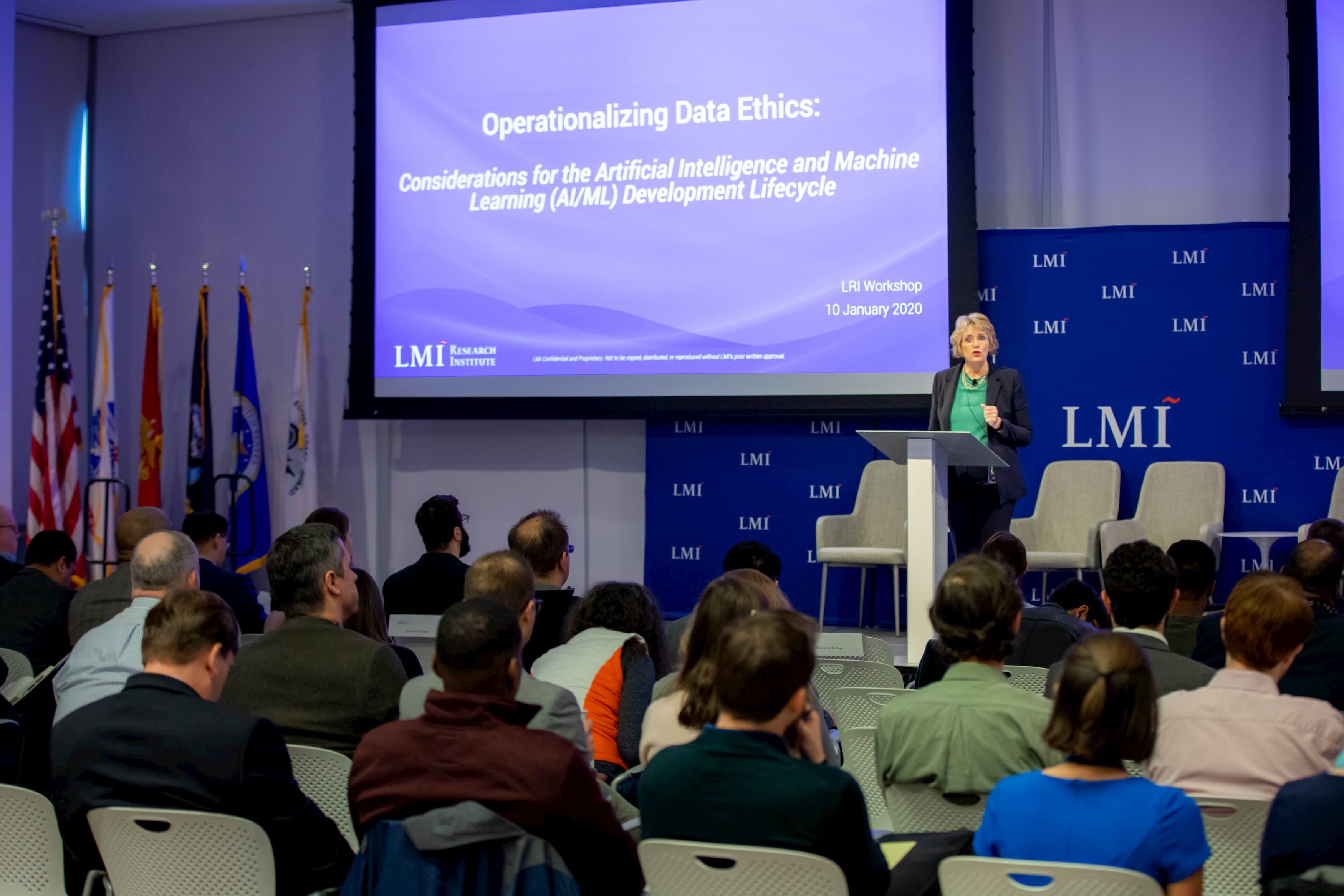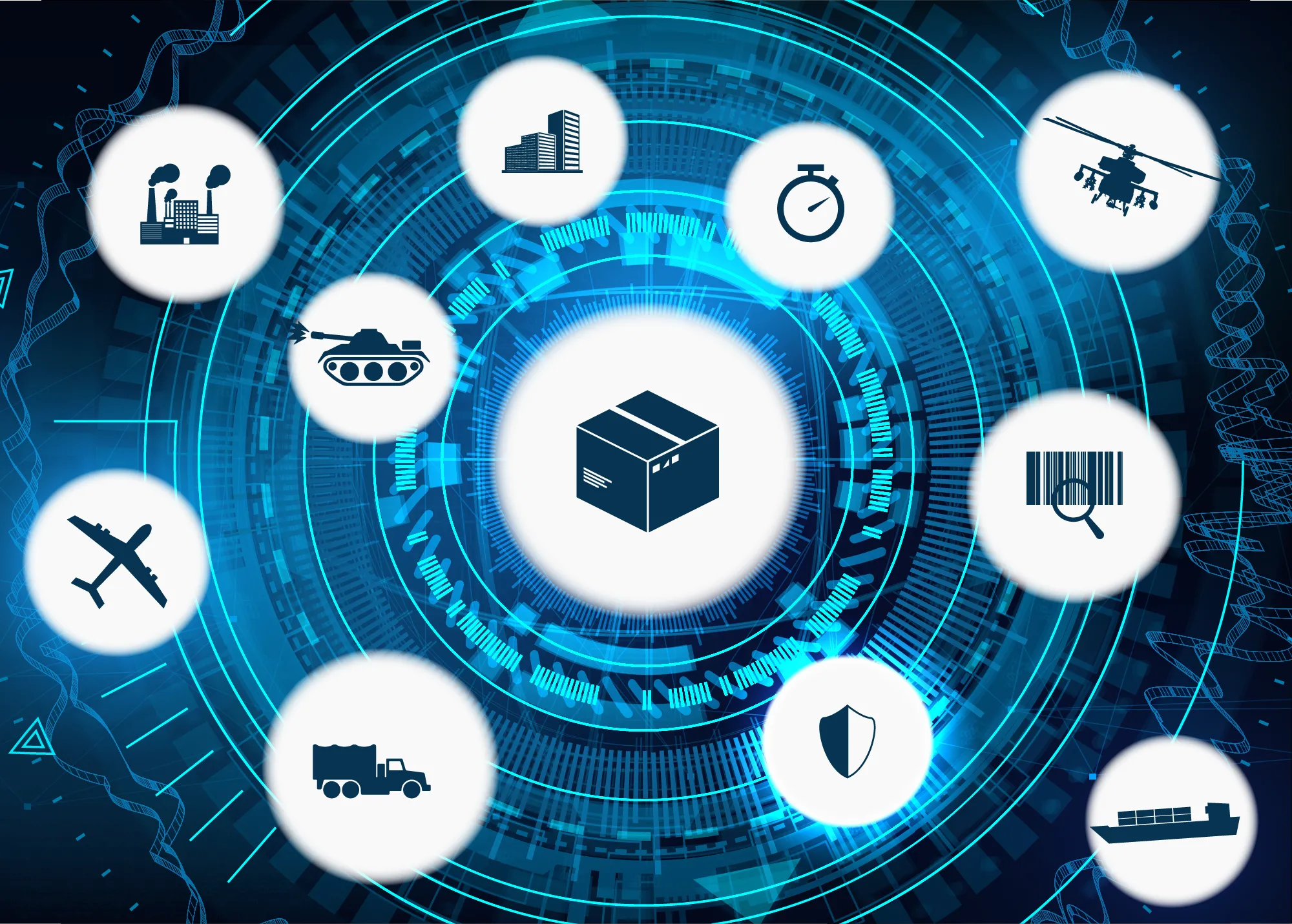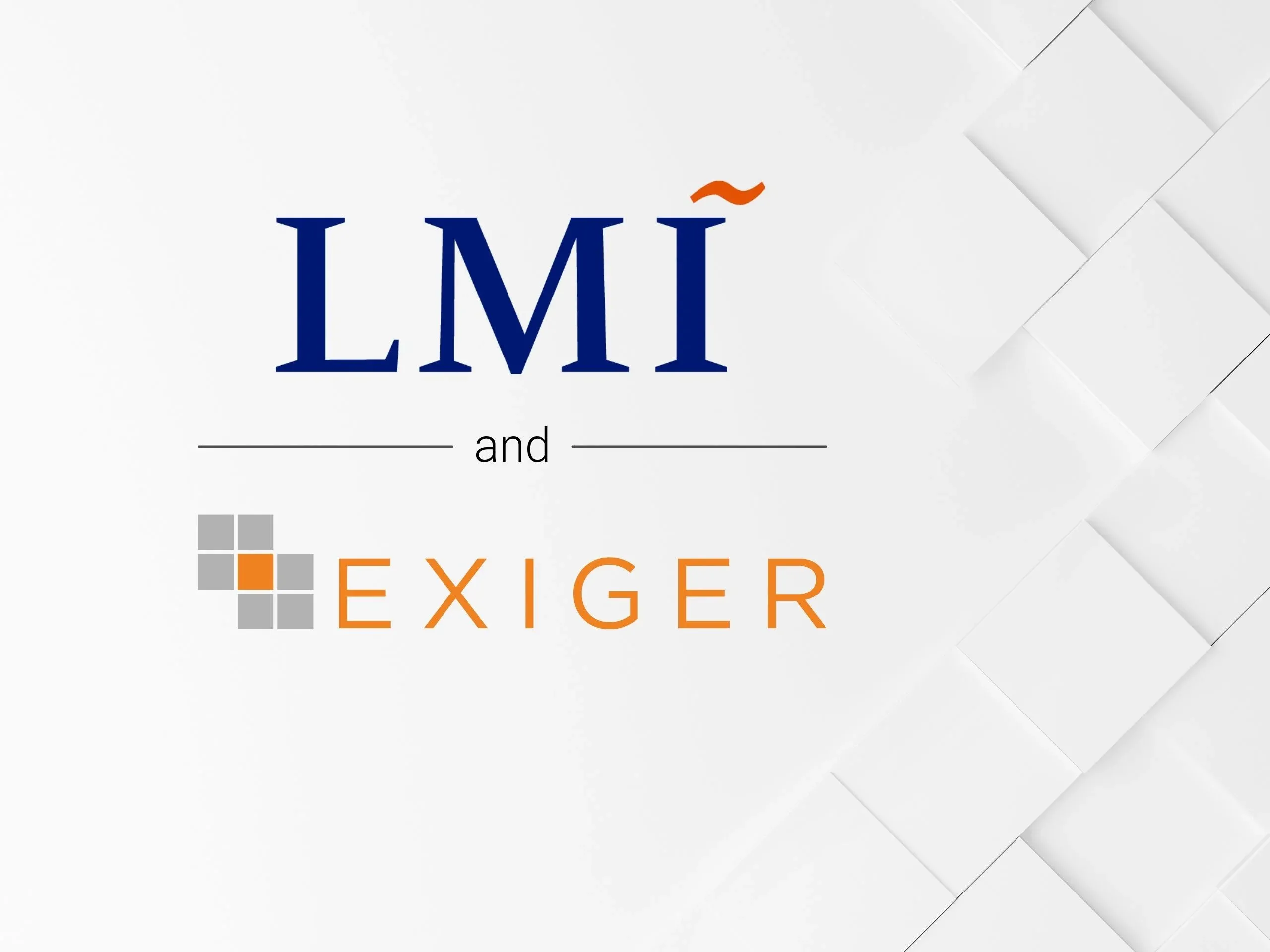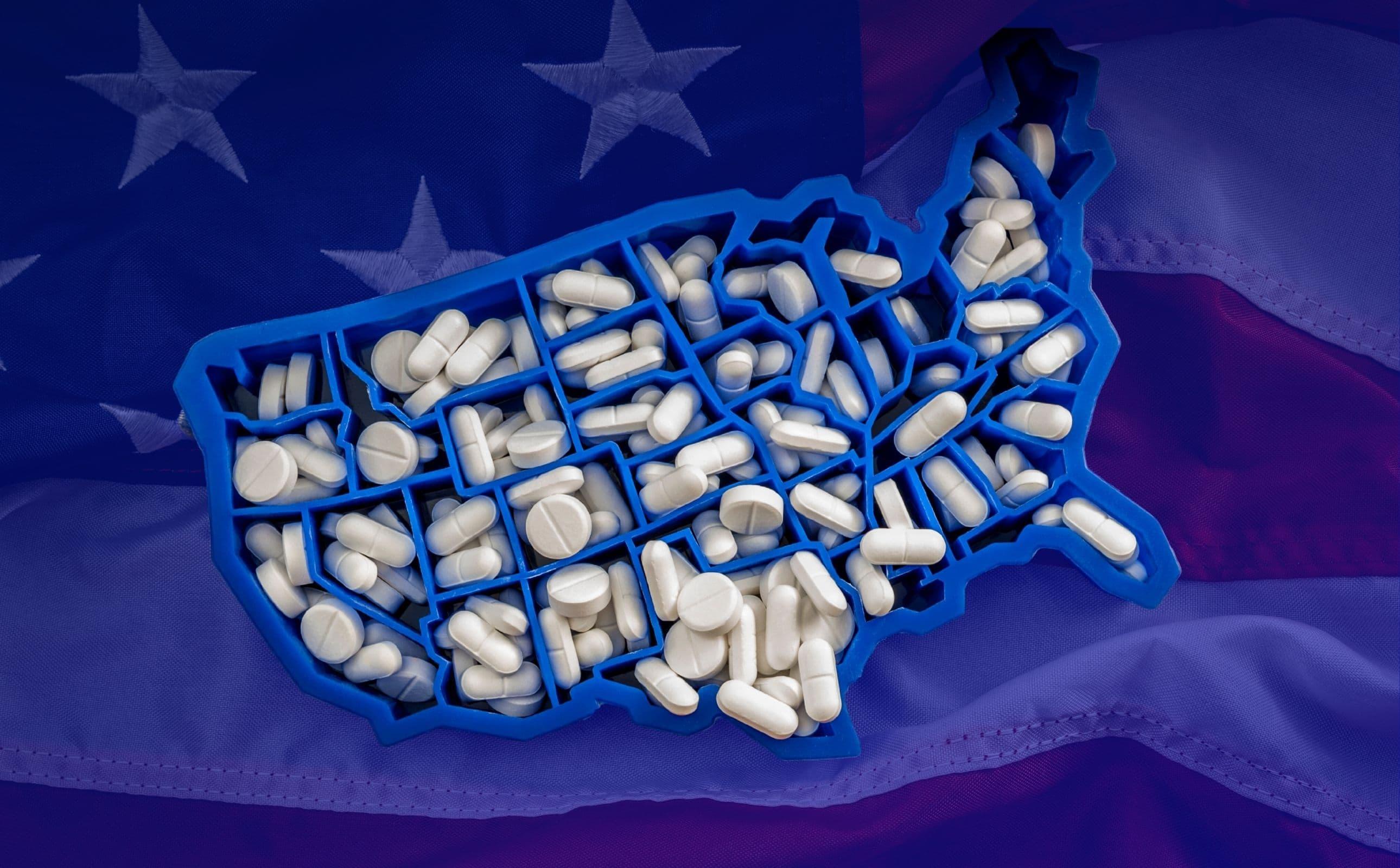
Technical DNA
Building the Digital Enterprise for Next-Generation Sustainment
tDNA™
Modern sustainment requires agility, flexibility, and interoperability. Emerging technologies such as additive manufacturing, virtual reality, and digital twin have transformed sustainment practices. These capabilities rely on a digital foundation, a system and infrastructure that provides the right data at the right time to the right stakeholder. A modern digital enterprise that supports the agile application of new capabilities to improve readiness and reduce costs is now possible.
To fully realize these benefits, the government and its industrial partners must embrace a common and shared vision of this digital enterprise. Unfortunately, standard practices differ within departments, services, supply chains, and individual programs across the federal space. Organizational and functional boundaries can create barriers to implementation that prevent desired benefits from being realized. LMI champions a digital-enterprise approach that emphasizes the total lifecycle and cost of ownership. Our Technical DNA (tDNA™) approach combines digital engineering, lifecycle management, supply chain risk management, and intellectual property (IP) management to ensure that the modern sustainer has the right data at the right time at the right price.
Technical data are descriptive data, models, standards, process descriptions, quality test plans, and other information that represent the physical reality of an object in digital space.
Technical Data-Enabled Capability
Available, accessible, secure, and model-based technical data facilitate the enterprise-wide adoption of emerging technologies.

What is tDNA™ ?
LMI’s tDNA™ vision is for required technical data to be available, accessible, secure, and model based throughout the digital enterprise:
- Available. Program management offices (PMOs) procure model-based data along with equipment and systems as well as appropriate IP rights for its use throughout the lifecycle. Data are available within the PMO’s IT systems, shareable across the enterprise.
- Accessible. No longer stovepiped within acquisition programs or by organizational boundaries, model-based data reside on IT systems that enable enterprise-wide users and stakeholders to access it in real time.
- Secure. Data security best practices are implemented while building the infrastructure required to protect growing repositories of valuable technical data from bad actors.
- Model based. The enterprise manages comprehensive model-based data on a digital thread and, when appropriate, converts legacy technical data into modern 3D formats.
tDNA™ in Every Phase
LMI enables PMOs to realize the benefits of modern sustainment tools, reducing total cost of ownership and improving lifetime readiness. Our internally developed approach prioritizes interoperability and modularity while avoiding obsolescence issues.
-
Pre-Acquisition
- Technical data maturity assessment
- IP assessment and tradespace strategy (continuous through lifecycle)
- Lifecycle value of technical data policies

-
Systems Acquisition and Development
- Technical data delivery verification
- Trusted third party for technical data maintenance
- Product lifecycle data management software selection
- Digital thread activation (machine-to-machine exchange and use)

-
Operations and Lifecycle Sustainment
- Technical data adequacy assessment for sustainment and new technologies
- Technical data modernization strategy
- 2D-to-3D conversion
- Technical data for additive manufacturing, augmented reality, CBM, and digital thread

-

“Innovation in government is best when it marries two thrusts simultaneously: long-standing challenges and opportunities presented by new technologies and methods. Technology for technology’s sake is usually a costly mistake.”
Bruce Kaplan
Principal, Logistics Strategy and Integration
Related Content
Explore All-
 Press Release
Press ReleaseNASA Selects LMI for Data Analysis and Technical Support Services
The National Aeronautics and Space Administration (NASA) has selected LMI to provide a wide range of technology-enabled strategic management and technical solutions through the Data Analysis and Technical Support Services II (DATSS II) blanket purchase agreement.
-
 Press Release
Press ReleaseKristen Cheman and Keith Rodgers Assume New Roles at LMI
LMI is pleased to announce Kristen Cheman’s transition from senior vice president (SVP), digital and analytic solutions, to SVP, intelligence market. In addition, Keith Rodgers has been promoted from vice president, advanced analytics & artificial intelligence, to SVP, digital and analytic solutions.
-
 Press Release
Press ReleaseLMI Selected to Provide Program Management Office (PMO) Support to Global Combat Support System Army (GCSS-Army)
LMI has been awarded a five-year, $65 million contract to provide program management, business transformation, and technical, financial, and professional advisory services to U.S. Army Program Executive Office Enterprise Information Systems' (PEO EIS) Global Combat Support System-Army (GCSS-Army) Program Management Office (PMO).
-
 Press Release
Press ReleaseLMI to Provide Data and Analysis Support to Air Force Sustainment Center (AFSC) Logistics Directorate (LG)
LMI will provide the Air Force (AF) and the Air Force Sustainment Center (AFSC) Logistics Directorate (LG) Office with highly specialized services and analysis to support Readiness-Spares Packages (RSP) and Readiness-Based Sparing (RBS).
-
 Press Release
Press ReleaseLMI Enhancing DLA R&D With AI/ML and FINISIM™ Solution
LMI will apply cutting-edge analytic methods to enhance research and development (R&D) methods and improve lead time estimates for systems and processes, on a newly awarded contract with the Defense Logistics Agency (DLA) Logistics Operations (J3).
-
 Academic Partnership
Academic PartnershipLMI and UVA's Data Entrepreneurship Challenge: Embracing Innovation and Collaboration for the Social Good
LMI and the University of Virginia School of Data Science (UVA SDS) have a long partnership: collaborating on research, sponsored capstone projects, internships, and faculty engagements; speaking jointly at student-run organization events; teaming on government contracts; and, of course, actively hiring new graduates. This year, we achieved a new milestone with the launch of our inaugural Data Entrepreneurship Challenge (DEC).
-
 Press Release
Press ReleaseLMI Awarded United States Postal Service Enterprise Program Services IDIQ
LMI was one of the companies recently awarded an Enterprise Program Services (EPS) indefinite delivery, indefinite quantity (IDIQ) contract with a maximum value of $670 million, and a 4-year base contract period plus two 2-year option periods.
-
 Insights
InsightsTrust and UI Design: The Heart of Human-AI Teaming
As AI increasingly integrates into our daily routines, it does not just automate routine tasks; it collaborates with humans for decision-making and creative activities. This blog explores how to build trust in human-AI teams and considerations for the corresponding interfaces.
-
 Press Release
Press ReleaseLMI Secures $604 Million U.S. Border Patrol Task Order
LMI has been awarded a one-year base period and four, one-year options task order for a ceiling value of $604 million to support the U.S. Border Patrol’s Program Management Office Directorate (USBP PMOD), marking the largest contract award in LMI’s more than 60-year history.
-
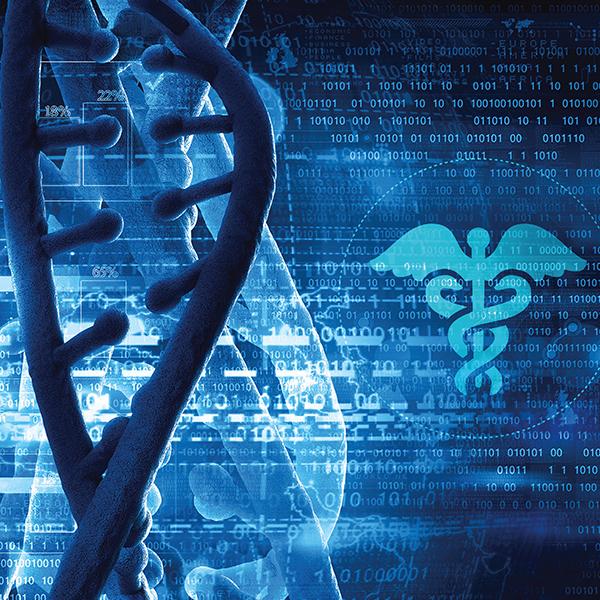 White Paper
White PaperEmerging Issues and Opportunities of the Genomic Data Revolution
Now is the time to get your organization ready for the genomic data revolution. From government agencies to the private sector, from healthcare to technology, and everything in between, all organizations need to be prepared for upcoming challenges and opportunities.
-
 Innovation at the Pace of Need™
Innovation at the Pace of Need™Three Considerations for VA and DHA Digital Transformation
The transformation will improve organizations and patient outcomes. LMI experts have been strategic partners throughout other large-scale digital transformations and offer insights to help these projects succeed.
-
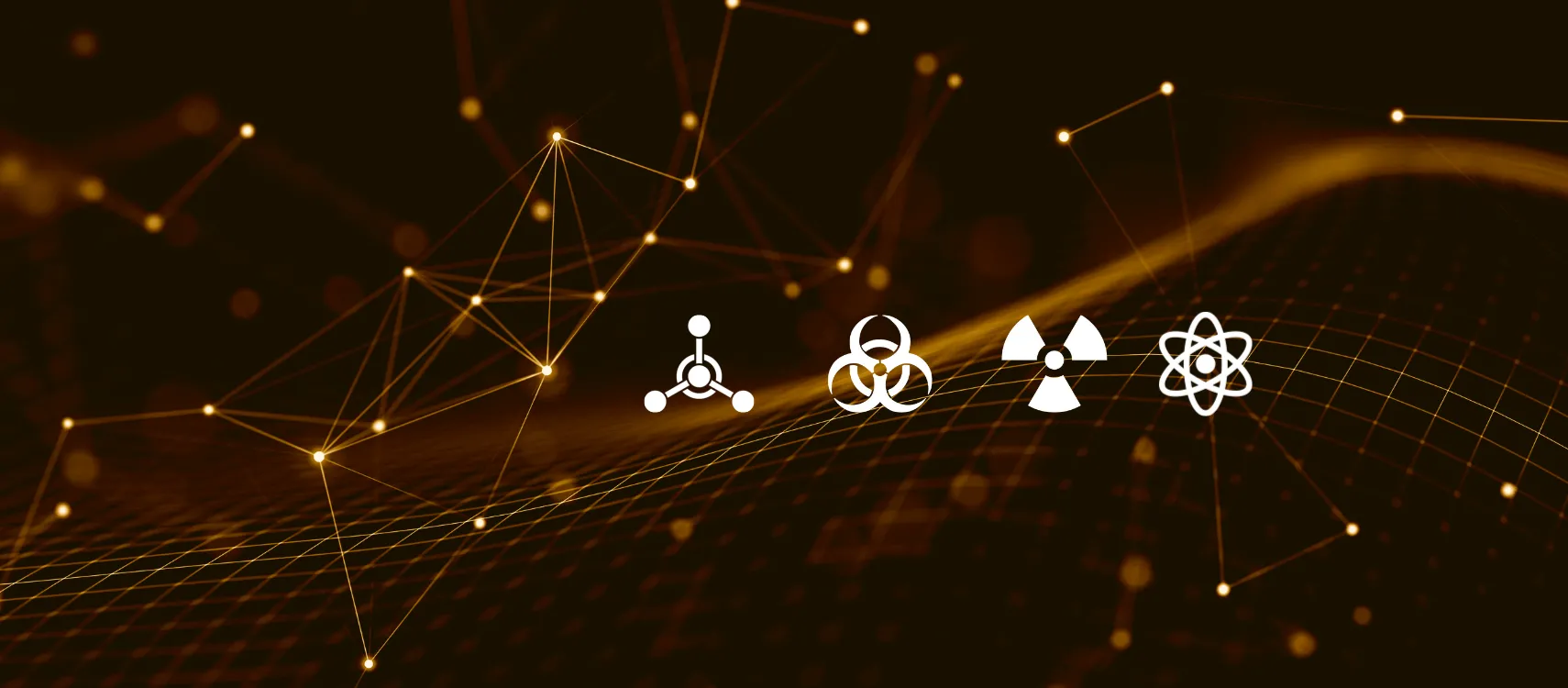 Press Release
Press ReleaseLMI Selected to Expand Support to U.S. Army Through STEPSS Contract
LMI has been selected to support the U.S. Army’s Combat Capabilities Development Command Chemical Biological Center (DEVCOM CBC). This 10-year, potential $869 million Scientific, Technical, Engineering and Program Support Services (STEPSS) multiple-award task order contract will allow LMI to continue helping prepare the U.S. Army to detect and respond to chemical, biological, radiological, and nuclear (CBRN) threats.
-
 Press Release
Press ReleaseLMI Selected to Support GSA’s OFM’s Energy Division and Climate and Sustainability Division through Renewable Energy BPA
LMI will provide subject matter expertise and program management services for the GSA Public Buildings Service (PBS) Office of Facilities Management (OFM) Energy Division and Climate and Sustainability Division.
-
 Press Release
Press ReleaseLMI Selected to Support HHS ASPR’s Countermeasures Acceleration Group
LMI has been awarded a two-year, $24 million contract to provide support to the U.S. Department of Health and Human Services (HHS) Assistant Secretary for Preparedness and Response’s (ASPR) Countermeasures Acceleration Group (CAG).
-
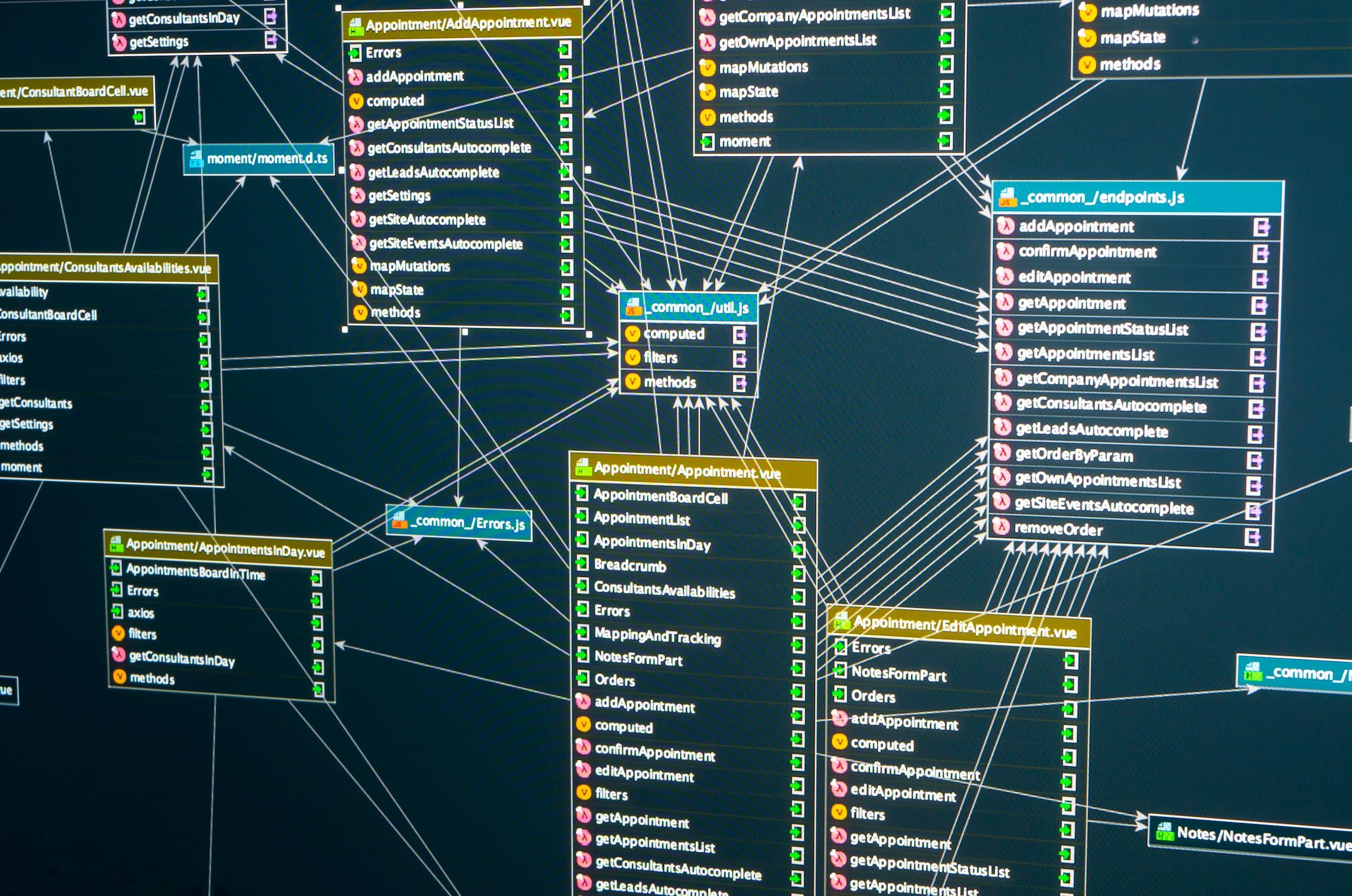 Press Release
Press ReleaseLMI to Support Policy Management and Reporting for DoD Security Cooperation
LMI will assist the Department of Defense (DoD) in streamlining policy development and reporting for its security cooperation activities in support of the Defense Security Cooperation Agency (DSCA), with a total potential contract value of approximately $5 million.
-
 Press Release
Press ReleaseLMI Supports ODASD(MR) Efforts to Lower Costs and Improve Warfighter Readiness through Innovation
LMI will provide industrial base assessments, data analytics, and policy and resource management services to assist the Department of Defense (DoD) in meeting materiel readiness requirements across its complex sustainment enterprise.
-
 Press Release
Press ReleaseLMI to Perform Study on Future of NASA’s Upper Class E Airspace Operations
LMI will advise the National Aeronautics and Space Administration (NASA) under the Air Traffic Management–eXploration (ATM-X) project by conducting a future-focused research study to assess the market and traffic management requirements for Upper Class E airspace.
-
 Our Leadership Team
Our Leadership TeamJoshua Wilson
Josh is the president of markets, growth, and technology at LMI. In this role, he has direct oversight over LMI’s entire customer portfolio and leads LMI’s business growth function, which includes LMI’s proposal center, business development strategies, capture management, and sales engineering teams.
-
 Insights
InsightsSupply Chain Integrity: Critical Every Day
LMI has 60+ years of experience ensuring that clients receive the best logistics support. In his recent blog, Jon Amis explains why supply chain integrity must be considered throughout the entire year. Our supply chain management practice assists with all aspects of a customer’s supply chain, from managing assets, property, and inventory, to performance measures, process improvement, and overall supply chain risk.
-
 Innovation at the Pace of Need™
Innovation at the Pace of Need™Forge™ Technology Studio: Prototypes
Our prototypes are shaping the nation of next. From developing a wearable integrated sensor platform (WISP) that drives decision-making to shaping solutions that streamline supply chains like LogSmart™ Supply, our work at the edge of possible reimagines mission capability.
-
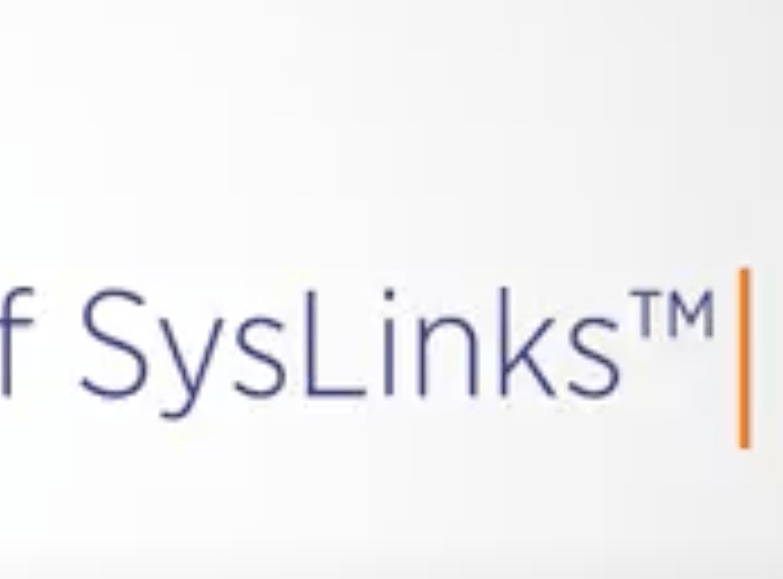 Innovation at the Pace of Need™
Innovation at the Pace of Need™SysLinks™—System Optimization and Network Linkages
SysLinks™ is the first practical method for linking reliability and maintainability models with spares optimization for complex networks. This new methodology helps managers pinpoint investments that will have the greatest positive impact on mission success.
-
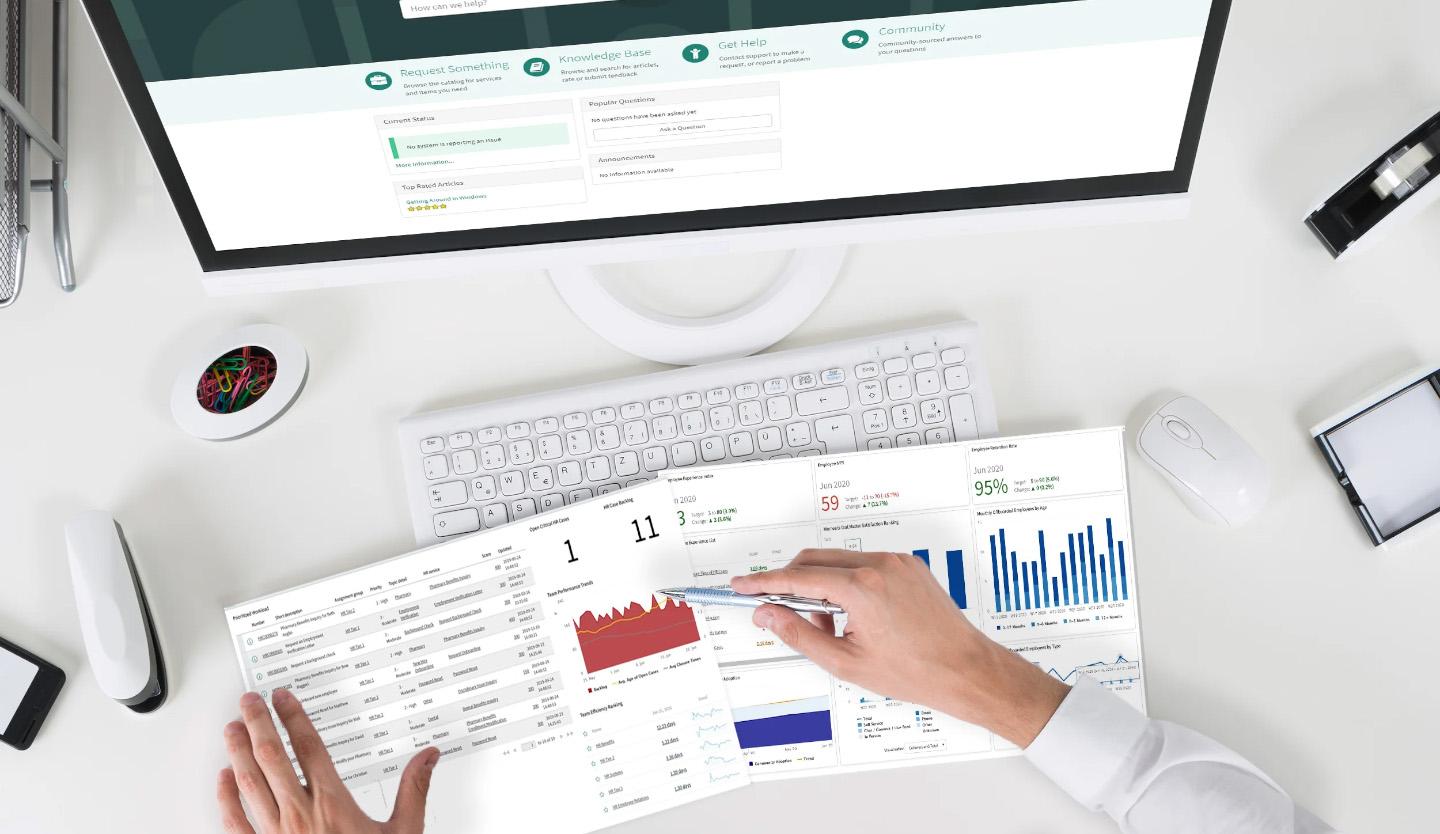 Solutions
SolutionsOpenPolicy™ Knowledge Makes Document Searches Smarter
LMI’s OpenPolicy is a semantic tool that examines scores of documents simultaneously using subject-specific thesauri of key terms, synonyms, acronyms, and other related terms and phrases. This enhanced vocabulary-based semantic search capability pinpoints relevant paragraphs and highlights information across databases.
-
 Insights
InsightsWhat the U.S. Must Do Now To Avoid the Next Pandemic
COVID-19 is not the first pandemic the United States has faced, but it may be the one that teaches us some very modern lessons about public trust, our surveillance networks, and effective response management. Here’s what the U.S. can learn from past pandemics and COVID-19 to ensure an effective response to the next pandemic.
-
 Press Release
Press ReleaseLMI Awarded the Joint Artificial Intelligence Center (JAIC) Data Readiness Artificial Intelligence Development (DRAID) Program Basic Ordering Agreement (BOA)
LMI will provide a broad spectrum of data management and analytic services for the Department of Defense (DoD) Joint Artificial Intelligence Center (JAIC) with the goal of accelerating artificial intelligence (AI) scaling across the department.
-
 Innovation at the Pace of Need™
Innovation at the Pace of Need™Evaluate Inventory and Financial Impacts Before Making Changes
FINISIM™ is a discrete event simulation that provides rapid analyses of complex, large-scale inventory and financial systems and the interaction between them, tracking supply-chain–related financial metrics.
-
 Press Release
Press ReleaseJonathan Baba Joins LMI Leadership Team as Senior Vice President, Defense Market
Tysons, Va.— LMI is pleased to announce that Jonathan (Jon) Baba has joined LMI as senior vice president, defense market. He brings over 20 years of public-sector experience supporting the Department of Defense (DoD) and defense industry.
-
 Insights
InsightsIntegrating IoT and Sensors To Improve Infrastructure Management Systems
When paired with AI/ML, the data provided by IoT devices and sensors offer insights on the status and condition of assets while enhancing utility, efficiency, and resiliency. Our experts weigh in on what is important to consider when implementing these technologies to improve infrastructure management.
-
![Group photo from the USFS lichen biomonitoring training in the Rouge River–Siskiyou National Forest. Lower row (left to right): Ashley Rivero (LMI), Bri Bernstein (U.S. Forest Service [USFS]), and Amanda Hardman (USFS). Upper row (left to right) Jennifer Brown (LMI), David Walls (LMI), and Teresa Bird (USFS).](/sites/default/files/styles/p_related_content_card_image/public/2023-05/Screen%20Shot%202022-10-04%20at%209.27.03%20AM.png?itok=EZCUZuMP) Innovation at the Pace of Need™
Innovation at the Pace of Need™LMI Team Receives Specialized Biomonitoring Training
LMI’s environmental planning team (Jennifer Brown, Ashley Rivero, and David Walls) completed lichen biomonitoring training sponsored by the U.S. Forest Service, Region 6. The team spent three days in the Rouge River–Siskiyou National Forest’s Kalmiopsis Wilderness, where they learned how to set a biomonitoring plot, calculate tree density, identify lichen plant communities, set abundance scores, and collect tissue samples for analysis.
-
 What We Do
What We DoAssessing & Anticipating Rapidly Evolving Capabilities
LMI tailors data-driven approaches to select, develop, and mature capabilities with simultaneous and integrated analytical, simulation, prototyping, demonstration, and transition activities. Our customers engage with feedback throughout the process for continuous improvements.
-
 Innovation at the Pace of Need™
Innovation at the Pace of Need™Logistics Automation: Where Military and Commercial Applications Converge
To combat labor shortages in the transportation market, much of the world is investing in automated processes. For the U.S. military, logistics automation will be necessary in contested environments where near-peer adversaries target our logistics capabilities.
-
 Press Release
Press ReleaseLMI Migrating the Maintenance and Availability Data Warehouse to Advana
LMI has been awarded a 1-year, $1.5 million contract for a one-time data migration from the LMI-created Maintenance and Availability Data Warehouse (MADW) to the Advana Data Warehouse for the Joint Artificial Intelligence Center.
-
 What We Do
What We DoContested Logistics Decision Dominance
Leveraging DoD data, LMI’s technology accelerator, the Forge™, uses agile methods and human-centered design to rapidly create solutions like our Contested Logistics Engine and Logistics Awareness Artificial Intelligence (AI) Simulation prototype for dynamic logistics planning in contested environments.
-
 Press Release
Press ReleaseLMI Forms Digital and Analytic Solutions Unit to Accelerate Technology-Enabled Transformation for Federal Agencies
LMI has named Karen Britton as chief digital officer and vice president of marketing and communications and Josh Wilson as vice president of digital and analytic solutions, a new business unit resulting from the merger of its advanced analytics and digital services practices.
-
 Culture News
Culture NewsEmployee Spotlight: Mark Stammler, Consultant, Data Engineering
Mark Stammler, Data Engineering consultant, has experience that spans multiple service lines at LMI, starting as an intern in 2019 and most recently becoming a consultant supporting customers in the data operations service line. Learn about his accomplishments, what he enjoys about working at LMI, and his advice to early career professionals.
-
 Press Release
Press ReleaseLMI to Continue Support of DLA R&D Efforts
LMI will continue supporting the Defense Logistics Agency by providing cutting-edge innovations to improve its technology and business processes. LMI will furnish support in the areas of planning, procurement, product quality, technical data, and data management.
-
 Press Release
Press ReleaseLMI to Continue Army Enterprise Systems Integration Program Support
LMI will continue to provide program management, business transformation, technical, and professional advisory services to the Project Manager, Army Data and Analytics Platforms (PM ARDAP), with a new three-year, $211 million award. LMI’s capabilities will enable the Army to modernize business operations and implement integrated management systems to transform Army enterprise resource planning and data systems.
-
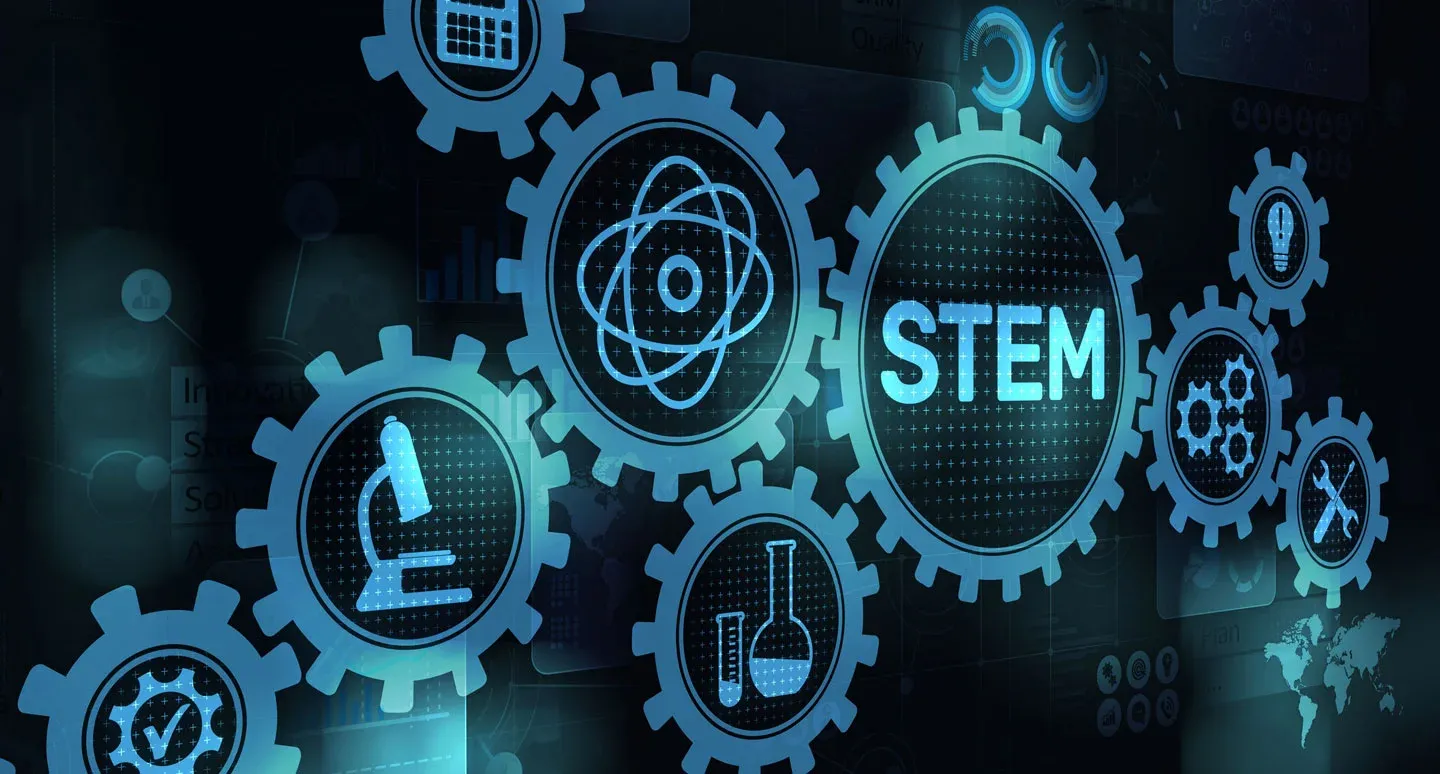 Press Release
Press ReleaseLMI Builds the Next Generation of DoD Civilian Scientists and Engineers with the SMART Scholarship-for-Service Program
LMI has been awarded a new five-year, $450 million contract supporting the Department of Defense’s Science, Mathematics, and Research for Transformation (DoD SMART) Scholarship-for-Service Program.
-
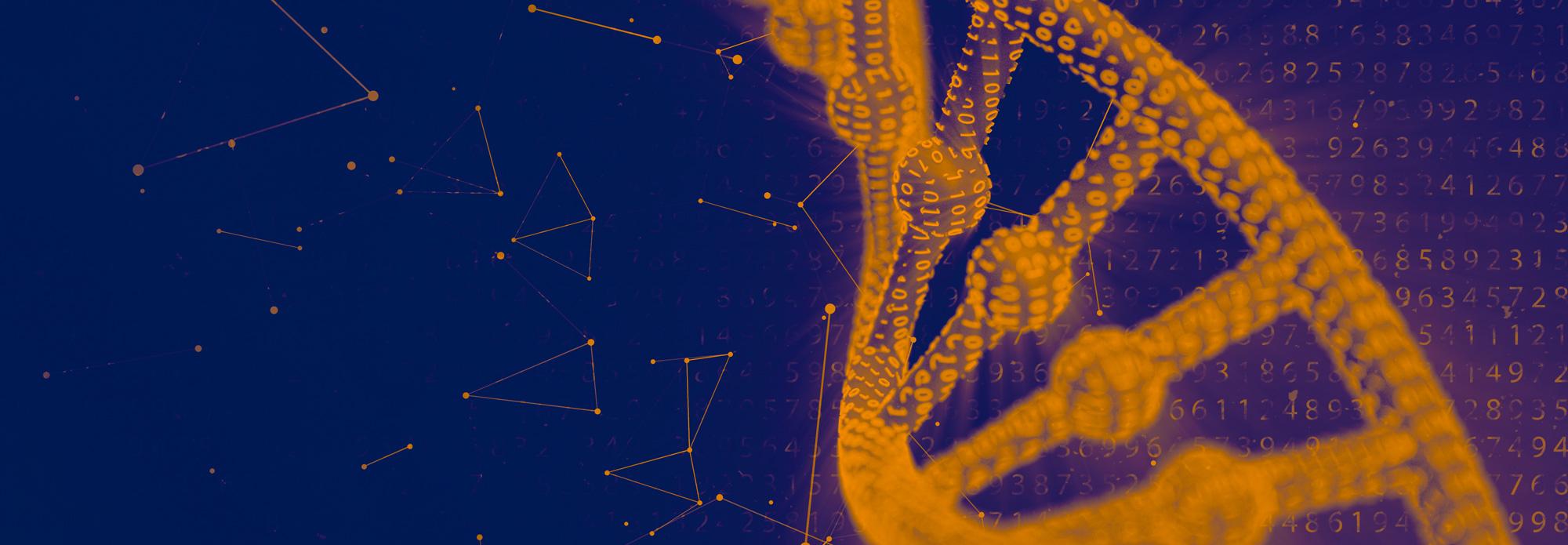 Press Release
Press ReleaseLMI Awarded DHA's OMNIBUS IV IDIQ Contract in All Four Market Segments
LMI has been awarded the Defense Health Agency (DHA) OMNIBUS IV indefinite delivery, indefinite quantity (IDIQ) $10 billion contract in all four market segments: (1) Research and Development; (2) Research and Development Support Services; (3) Regulatory Processes; and (4) Translational Science Support and Services.
-
 Press Release
Press ReleaseKristen Cheman Named LMI Vice President of Digital & Analytic Solutions
LMI has promoted Kristen Cheman to vice president of digital & analytic solutions, where she combines subject matter expertise and leading-edge technologies to bring the best ideas and digitally-enabled services to our customers.
-
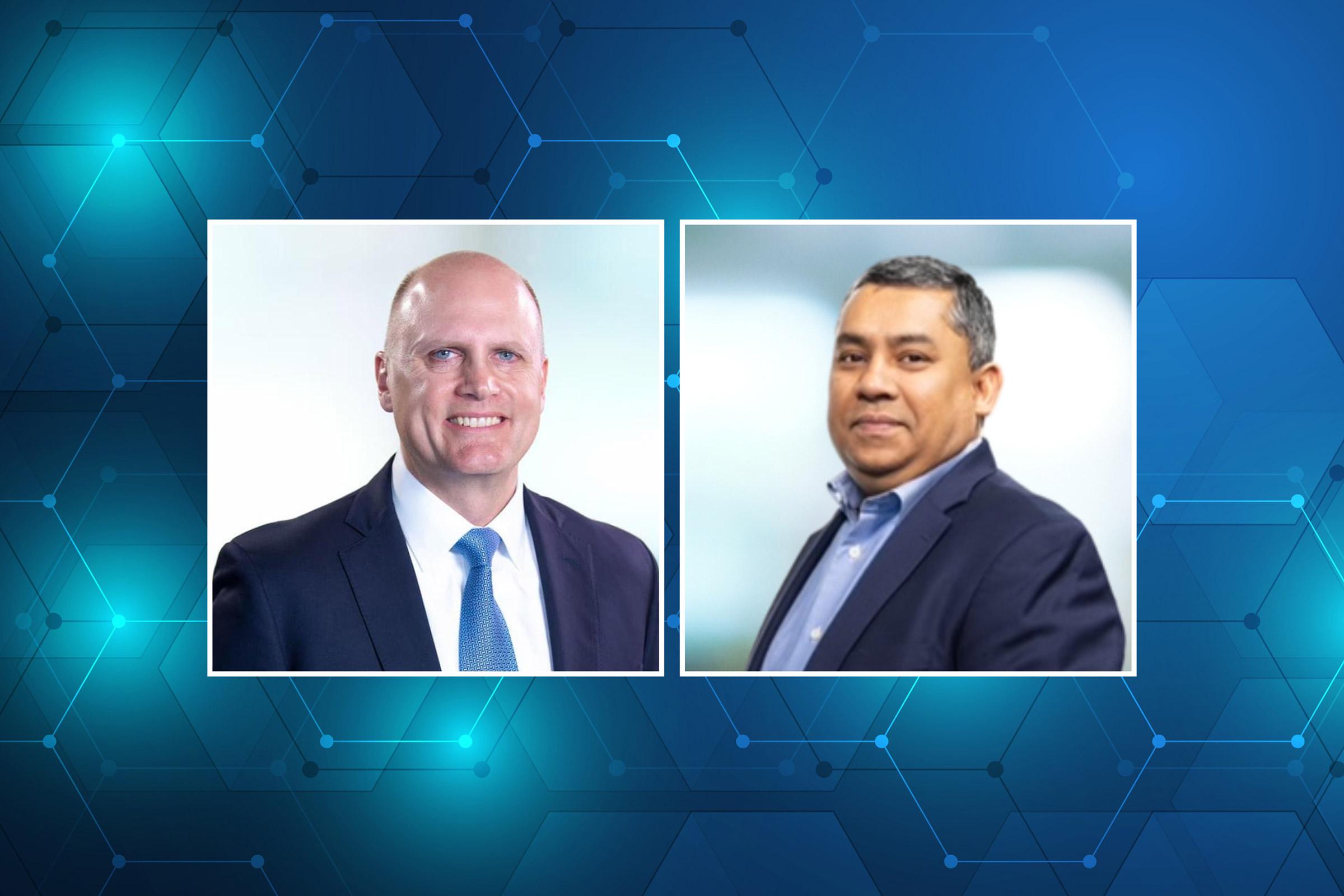 Press Release
Press ReleaseJoe Niehaus and Zaki Saleh Join LMI’s Senior Leadership Team
LMI promoted Joe Niehaus to senior vice president of the logistics service line and welcomes Zaki Saleh as senior vice president of the health & civilian market.
-
 Our Team
Our TeamBruce Kaplan
With more than 35 years of experience in program management, source selection, information systems requirements and tools, and supply chain logistics, Bruce is one of LMI’s leading innovators and solution architects. He focuses on processes and technologies that cross organizational and functional boundaries to improve customer outcomes.











